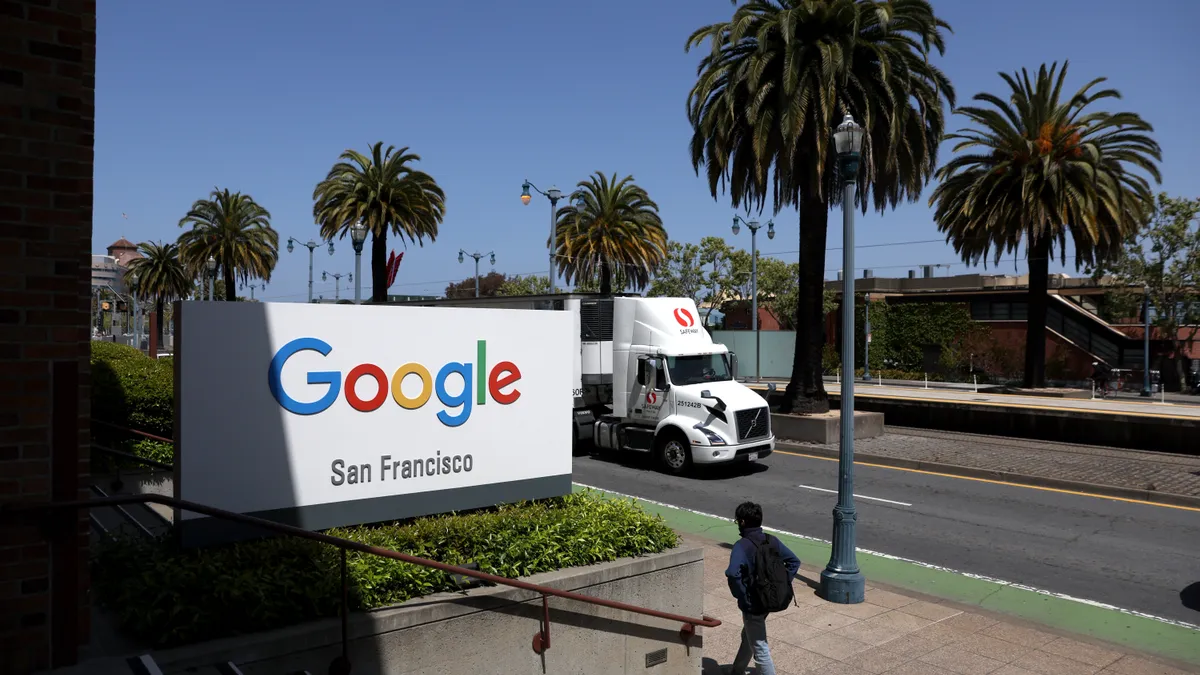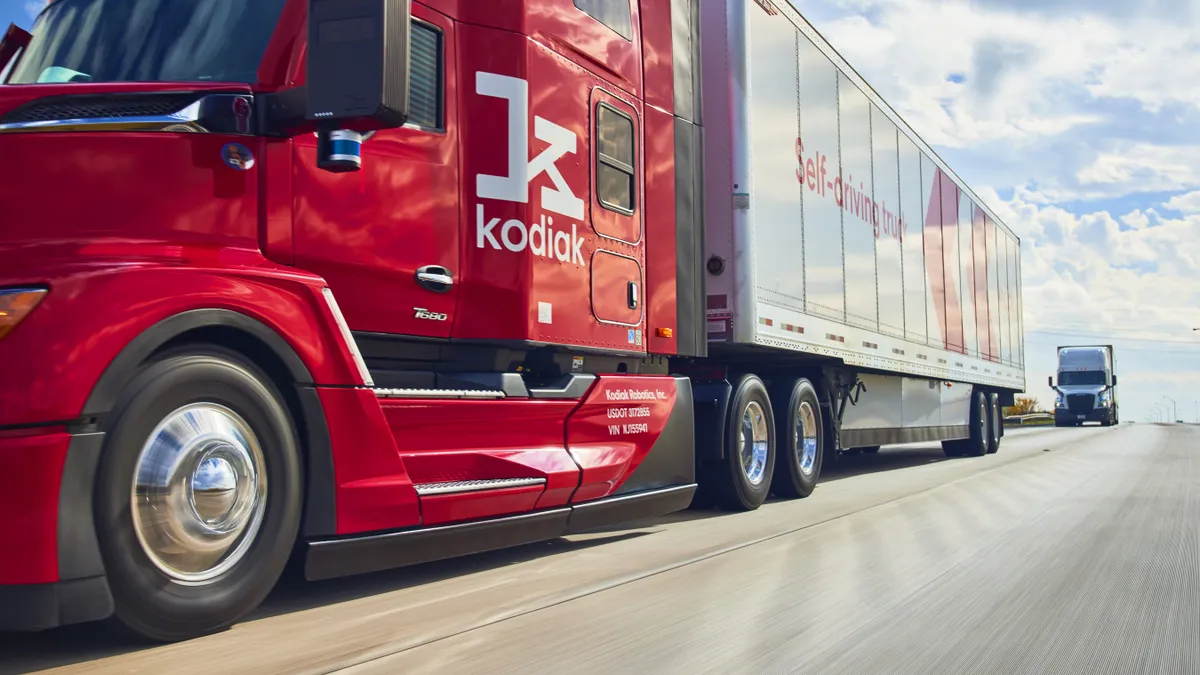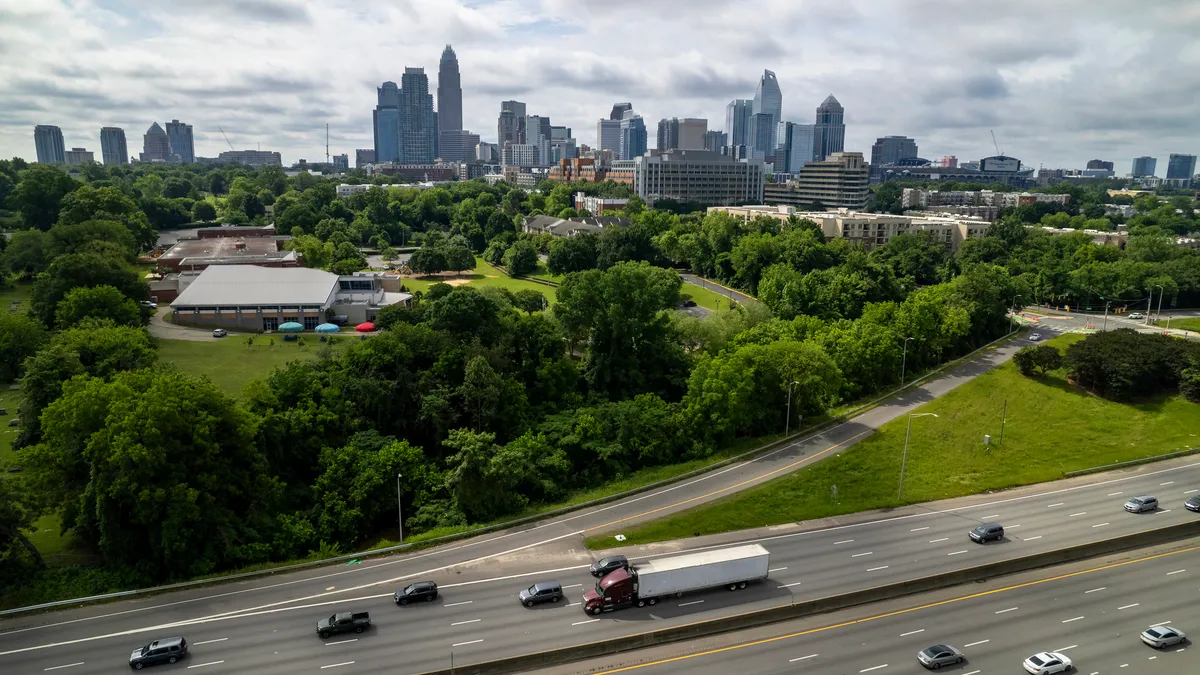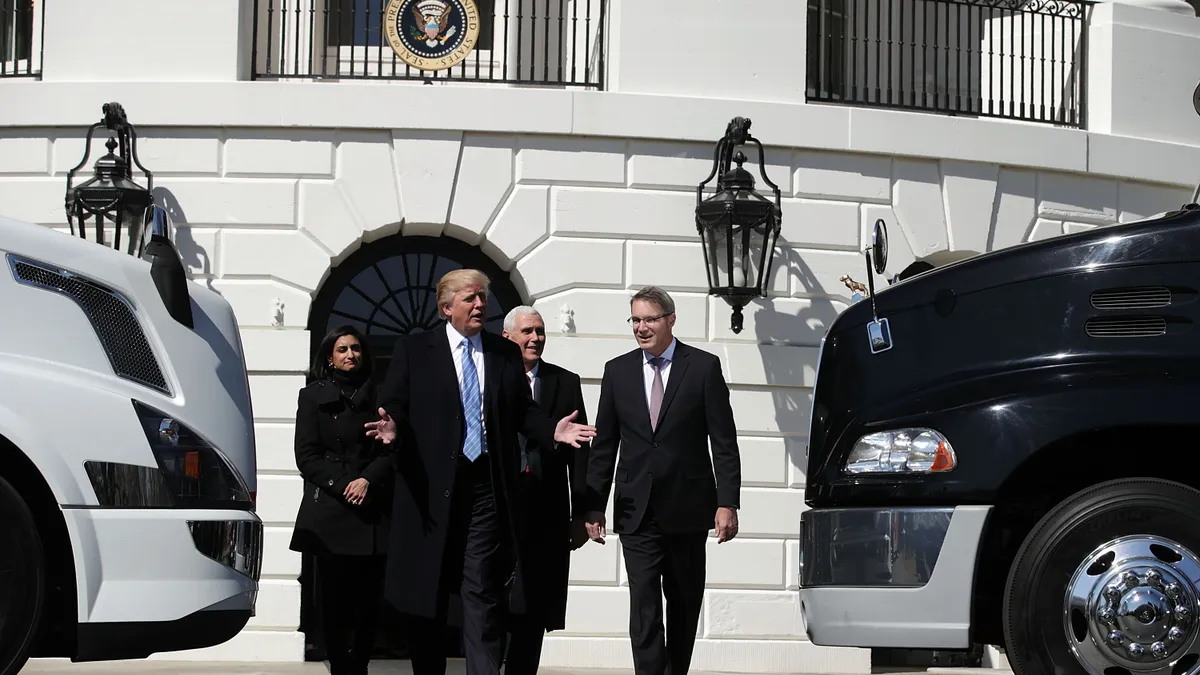In an inefficient, costly and yet vital piece of the supply chain, Google saw an opportunity to capitalize on the capabilities of its Maps platform and jump into last mile services.
The technology giant staked its claim in the home delivery sphere in March with the launch of two tools — Last Mile Fleet Solution and Cloud Fleet Routing API — focused on last mile execution and route planning, respectively.
Google's foray into fleet management technology isn't surprising to Jim Nicholson, SVP of operations at Loadsmart. He compared it to Amazon's entry into the logistics space: a natural next step for the company's wider ambitions. Hefty financial resources and years of Google Maps improvements should help the company with its foray into the space.
"Having a leading web mapping platform absolutely gives them a great opportunity and some advantage against the competitors," Nicholson said.
Google is bringing a bevy of Maps data and a familiar navigation interface to a space that has seen increased attention as home delivery demand has boomed. U.S. parcel volumes surpassed 21.5 billion in 2021, compared to pre-pandemic levels of 15.5 billion in 2019, according to the Pitney Bowes Parcel Shipping Index.
More effective route planning and execution has become critical in response to the rising number of packages. Since the last mile is the most expensive and least efficient step of the delivery process, avoiding misses like an inaccurate address is critical, said Shalin Mantri, group product manager at Google Maps Platform, who oversees its transportation and logistics vertical. Fleet operators receive addresses in varying states of quality, and it is one of the top causes of delivery failure, he said.
"One failure on that package basically means that it's unprofitable for the fleet operator," Mantri said.
Map quality and data ownership could be key advantages in the last mile space going forward. Customers for Google's last mile offerings are likely to only help the company improve its own mapping accuracy further, said Rick Watson, founder and CEO of RMW Commerce Consulting, in a LinkedIn post.
"Listen to any Amazon Flex driver and one of their primary complaints is about their route, maps, etc." Watson wrote.
Google targets delivery execution, route planning
The foundation of Last Mile Fleet Solution is the Google Maps Platform's tool for ride-hailing and on-demand delivery providers, which launched in 2020 and saw "tremendous traction,” Mantri said. That interest led Google to bring many of those capabilities to last mile delivery fleets.
Last Mile Fleet Solution aims to help fleet operators improve various aspects of the last mile delivery process, including including navigation using Google Maps' well-known interface, address capture, route planning and shipment tracking. It brings Google Maps' navigation capabilities to the driver, while both fleet operators and end consumers have real-time visibility into where the package is in its delivery journey, Mantri said. It's currently available for select customers in public preview before moving to general availability.
Cloud Fleet Routing API, which is now generally available, focuses on route planning. It helps fleet operators create accurate routing plans at scale, while being able to reoptimize an existing plan up to 20 times a day at no additional cost, Product Manager of Google Cloud AI and Industry Solutions Christopher Cho said in an April blog post. Reoptimizing may be necessary in instances such as traffic congestion.
There are plenty of companies already offering delivery route planning solutions, such as Circuit, Onfleet and Route4Me. Mantri said part of what separates Google's offerings from competitors is that it's bringing "an integrated cloud and mapping platform" across the last mile delivery process. This integration is critical to avoid information like destination addresses from getting lost in translation, he added.
"If you're using different maps or different geocoding between the entry point of an address to the downstream execution, it's like playing a telephone game, right?" Mantri said.
Major carriers keep routing in-house
Google's leap into the last mile could become more complicated than first anticipated as it stretches beyond its core competencies, according to Nicholson.
Carriers are always looking for ways to maximize the capabilities of their expensive fleets and beef up profits, but the last mile space is filled with large incumbents that have existing fleet management systems, he said. Transitioning to a new system like Google’s would introduce "a significant amount of lift" for these potential customers.
Major fleets also already have in-house routing capabilities. UPS completed the rollout of a dynamic routing upgrade to its ORION technology last year. The parcel delivery giant is now working toward automating driver dispatch, former chief information and engineering officer Juan Perez told CIO Dive in April. In 2020, FedEx Ground rolled out advanced route optimization software for its drivers to help it boost efficiency while meeting rapidly growing home delivery demand, President and then-COO Raj Subramaniam said on an earnings call.
But many companies beyond FedEx and UPS have been building up their own delivery fleets, and now they need the tools to execute those deliveries effectively, said Bringg CEO Guy Bloch. Many regional carriers and small-scale fleets also don't have the technological heft that larger carriers do, which could draw them to Google's services, he added.
Experts weigh in on what's next for Google
Carriers have begun to lean more on cloud-based technology that allows them to fully integrate their systems and improve visibility, Nicholson said. Google’s rollout of a full-scale, end-to-end solution could be the next step, depending on the reception of its current offerings.
"This is going to be very critical for them to demonstrate success and also learn and evolve within a very complicated space," Nicholson added.
Google is already providing services for one major transportation provider. As part of a multi-year agreement announced Monday, XPO Logistics moved several of its key applications to Google Cloud to take advantage of cloud computing's "scalability and availability." This will help XPO better deal with demand swings and keep its services running smoothly around the clock, according to a news release.
Google is making its logistics resources available to other companies in a similar way to Walmart GoLocal and Fulfilled by Amazon, Bloch said. He believes Google's new offerings play into its long-term goal of getting as many people using its search engine as possible. Helping companies improve their digital operations and their customers' online experiences will bring shoppers back online, creating more Google searches in the process, he said.
Customization in Google's offerings will be key for its success in the last mile space, as plenty of routing software vendors offer fuel and mileage optimization, John McClymont, director of operations strategy and continuous process improvement at Brink's, said in a LinkedIn post. He said the company will allow basic customizations at first before expanding those capabilities further.
"Google is getting the most mapping data on the planet," McClymont said. "Pair this with more commercial feedback and their database and rules engine will outperform everyone."






















